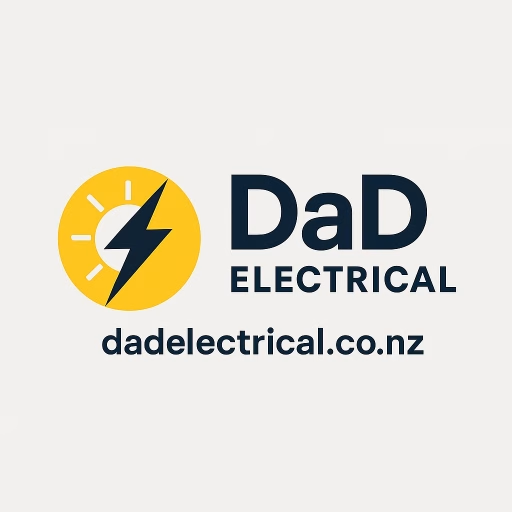With more patients opting for the comfort and convenience of home dialysis, it’s crucial to ensure that the electrical supply for these life-sustaining machines is safe, reliable, and compliant. At DaD Electrical, we specialise in medical installations that meet or exceed New Zealand standards—including dialysis unit installations in private homes.
Here’s what you need to know.
1. What Is Home Dialysis?
Home dialysis allows patients with kidney failure to carry out peritoneal dialysis (PD) or home haemodialysis (HD) using specialised machines, under the support of a clinical team. These machines require a dedicated power supply, often alongside plumbing, ventilation, and backup systems.
Haemodialysis equipment typically runs 4–6 hours per session, several times a week, drawing a consistent and clean power supply.
2. Electrical Requirements at a Glance
| Requirement | Typical Value / Description |
|---|---|
| Voltage | 230V AC (Standard single-phase) |
| Circuit type | Dedicated final subcircuit |
| Protection | 10 mA Type 1 RCD (AS/NZS 3003) |
| Socket outlet | Body-Protected Type GPO (IP44 recommended) |
| Earthing | Equipotential bonding (if required by risk assessment) |
| Load | ~1.5–2.5 kW max for haemodialysis systems |
3. Relevant Standards
Home dialysis installations intersect several key standards:
- AS/NZS 3000 (Wiring Rules) – Baseline for all NZ installations
- AS/NZS 3003 – Required where a patient is treated or connected to equipment in a defined treatment area (applies in most home dialysis cases)
- AS/NZS 3551 – Governs the equipment itself (not the install), but critical for safety checks
4. Installation Requirements
✅ Dedicated Circuit
- A dialysis machine must be on its own final subcircuit.
- Use 2.5 mm² TPS cable with a 16A MCB or RCBO, depending on manufacturer specs.
- Avoid sharing circuits with high-load appliances like ovens or heaters.
✅ RCD Protection
- Install a 10 mA Type 1 RCD, as required under AS/NZS 3003 for medical treatment areas.
- Type 1 RCDs are more sensitive than standard 30 mA RCDs and are designed for patient safety.
✅ Socket Outlet (GPO)
- Use a medical-grade double outlet, preferably labelled and fitted with a locking clip.
- Must be readily accessible but protected from water spray or cleaning splashes (IP44 recommended).
- Red-coloured GPOs can be used for identifying essential circuits, if applicable.
✅ Earthing and Bonding
- All exposed metallic parts (e.g., sinks, handrails, metal plumbing) may need to be equipotentially bonded to earth.
- Confirm bonding with low-resistance testing to ensure ≤0.1 Ω across connections.
✅ Location and Environment
- Ensure the dialysis area is dry, ventilated, and away from steam/kitchen areas.
- Avoid trip hazards or power boards; fixed wall outlets are preferred.
- Lighting should be adequate for visibility during treatment and cleaning.
5. Backup Power and Surge Protection
Dialysis machines are sensitive to power loss and voltage spikes. Recommendations include:
- Surge protection device at DB (Type 2 SPD)
- UPS (Uninterruptible Power Supply), if medically indicated (consult healthcare provider)
- Mains supply verification prior to commissioning
6. Commissioning and Certification
The installation must be:
- Inspected and tested as per AS/NZS 3000 and 3003
- Issued with a Certificate of Compliance (CoC)
- Accompanied by a Record of Inspection (RoI), especially where AS/NZS 3003 applies
- Optionally tested in conjunction with the clinical provider’s biomedical team before the machine is used
7. Maintenance and Ongoing Safety
- The electrical system must be visually inspected and tested annually
- RCDs should be tested monthly using the “test” button
- The dialysis machine should undergo servicing under AS/NZS 3551 by the equipment provider
8. When AS/NZS 3003 Applies to Home Dialysis
Home dialysis does meet the definition of a Body-Protected Area under AS/NZS 3003 if:
- The patient is treated at home
- The treatment involves external or internal patient-electrical connections
- A machine is connected directly to the patient
Therefore, the 10 mA RCD, medical GPO, and bonding requirements become mandatory for safe and legal installation.
Why Choose DaD Electrical for Your Dialysis Setup?
With DaD Electrical, you’ll receive:
- Compliant installation with AS/NZS 3003
- Coordination with clinical and equipment providers
- Certified testing and commissioning
- Full documentation (CoC, RoI, test results)
Final Word
Dialysis is a critical treatment, and its safety depends not just on the machine—but on the electrical system it’s connected to. By following this guide and working with licensed, experienced electricians, you can ensure your system is reliable, compliant, and safe for long-term home use.
Need a quote or advice? Get in touch with us here, and let’s get your home ready for care.
